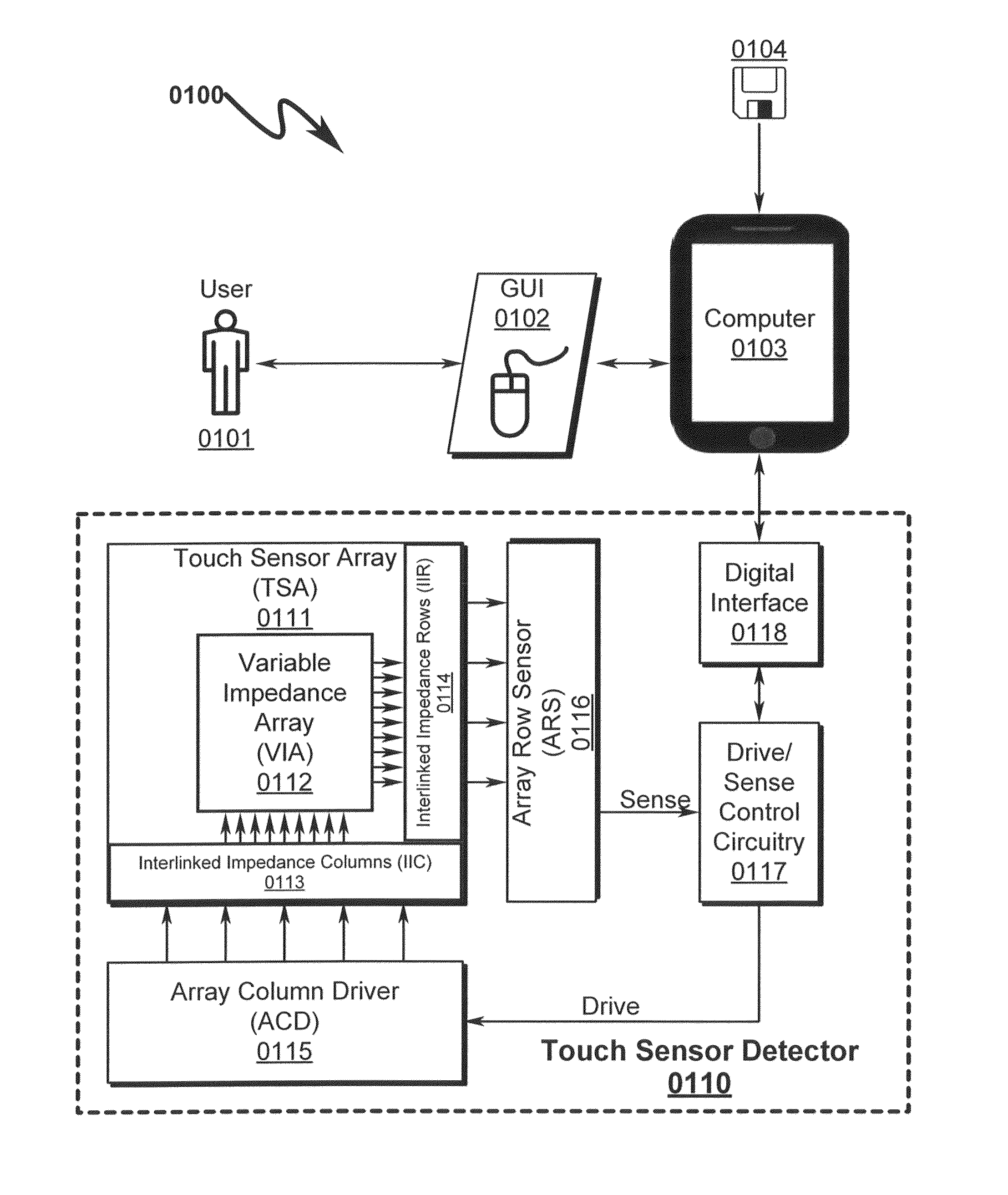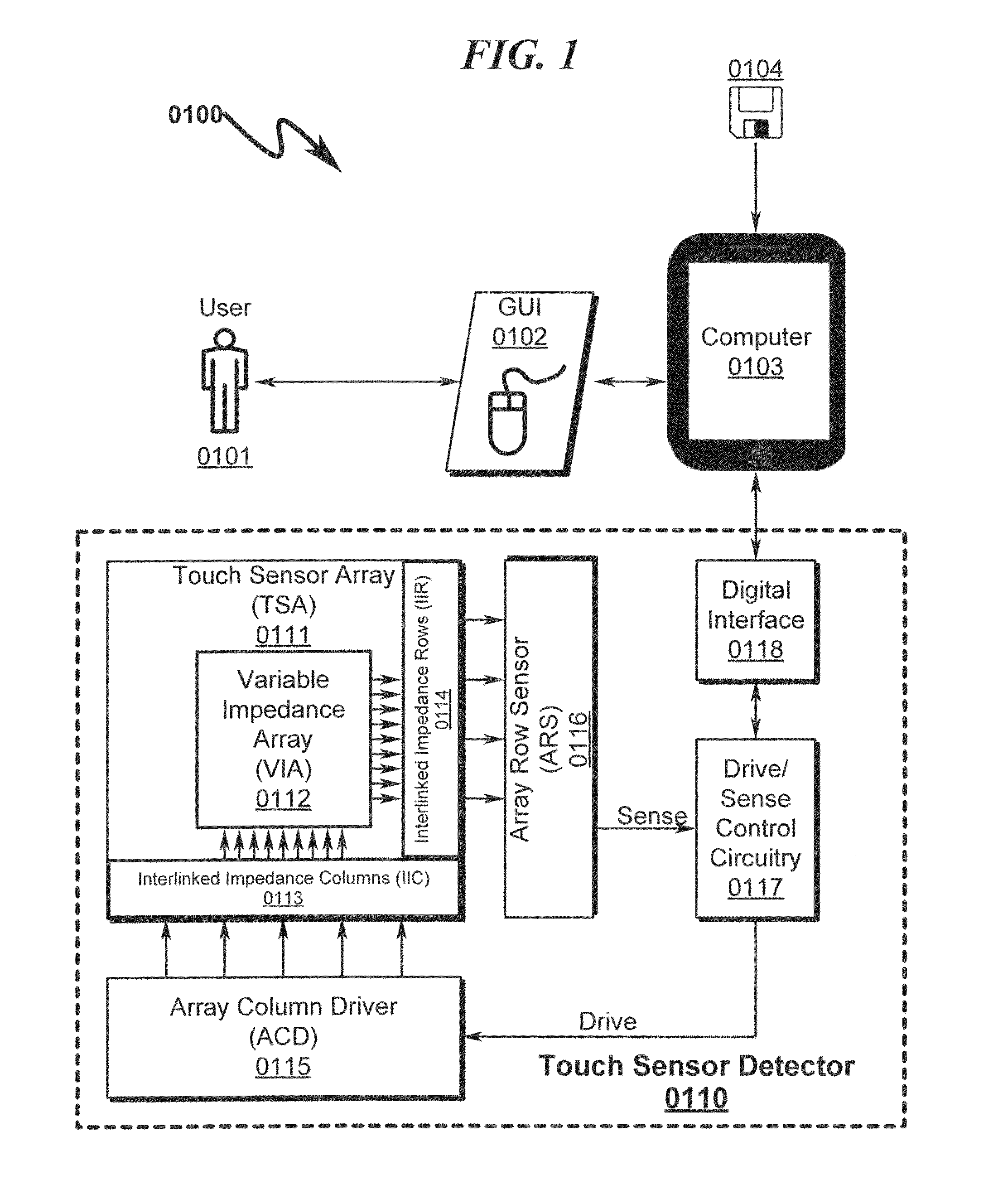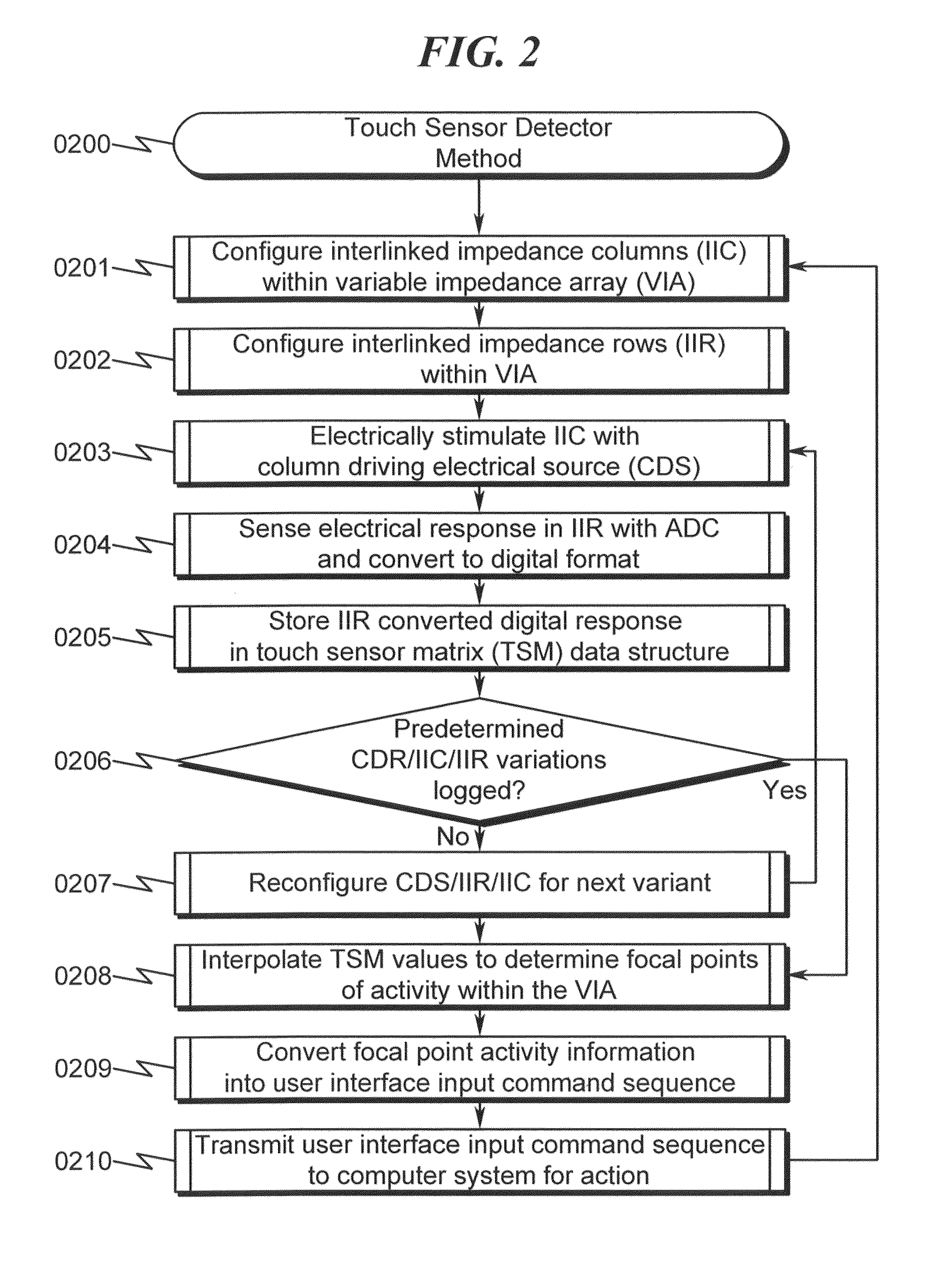Touch sensor detector system and method
a detector system and sensor technology, applied in the field of systems and methods, can solve problems such as the accuracy with which a single touch can be tracked, and achieve the effects of high tracking resolution, increased sensor performance, and high resolution
- Summary
- Abstract
- Description
- Claims
- Application Information
AI Technical Summary
Benefits of technology
Problems solved by technology
Method used
Image
Examples
embodiment (
IFSA Embodiment (3300)-(6400)
Overview
[0226]While the present invention may be implemented using a wide variety of sensor technologies in the VIA, one preferred collection of exemplary embodiments utilize pressure-sensitive sensors to form an interpolating force sensing array (IFSA). The following discussion details this pressure-sensitive class of preferred embodiments and provides detailed exemplary construction contexts. Note that while the IFSA embodiments are detailed below, the techniques used in their construction may be equally applied to other types of sensor technologies such as capacitive, electromagnetic, etc.
[0227]In accordance with the above general description, the present invention IFSA embodiment describes systems and methods for constructing a high resolution force sensing array, an interpolating circuit that allows the drive and sense circuitry to have a lower resolution than the force sensing array, a circuit and accompanying algorithms for scanning the sensor and...
PUM
 Login to View More
Login to View More Abstract
Description
Claims
Application Information
 Login to View More
Login to View More - R&D
- Intellectual Property
- Life Sciences
- Materials
- Tech Scout
- Unparalleled Data Quality
- Higher Quality Content
- 60% Fewer Hallucinations
Browse by: Latest US Patents, China's latest patents, Technical Efficacy Thesaurus, Application Domain, Technology Topic, Popular Technical Reports.
© 2025 PatSnap. All rights reserved.Legal|Privacy policy|Modern Slavery Act Transparency Statement|Sitemap|About US| Contact US: help@patsnap.com



